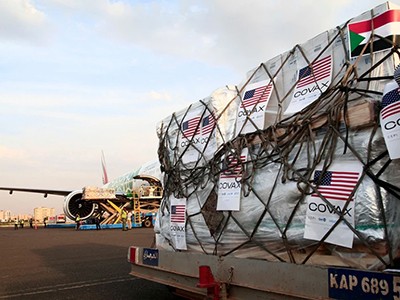
A health worker in Zimbabwe receives a COVID-19 vaccination. Many countries struggled to secure vaccine supplies during the pandemic.Credit: Tafadzwa Ufumeli/Getty
For the first time — and despite fears that it might never happen — nations have agreed a series of measures to prevent, prepare for and respond to pandemics. The terms of the first global pandemic accord were still being hashed out at the World Health Organization (WHO) headquarters in Geneva, Switzerland, up until the early hours of 16 April.
“This is a definitive moment in the history of global health,” says Lawrence Gostin, a specialist in health law and policy at Georgetown University in Washington DC, who followed the negotiations closely. The accord “sets out some very important norms to keep the world safe”, he says.
What the WHO’s new treaty could mean for the next pandemic
The accord was agreed without the United States, which withdrew from the pandemic treaty the day that President Trump was inaugurated. This reduces its power, says Gostin, but is also a source of strength. “Instead of collapsing in the face of President Trump’s assault on global health, the world came together.”
The treaty is not perfect but represents a major achievement, says Michelle Childs, policy advocacy director at the non-profit organization Drugs for Neglected Diseases Initiative in Geneva. “People didn’t think that they’d get to this stage of agreeing at all.”
“I even have goosebumps because I can’t believe we finally finished,” says Precious Matsoso, co-chair of the WHO intergovernmental negotiating body created to draft the treaty in 2021. “It’s been a long journey.”
Pathogen sharing
The treaty lays out the broad outline of a ‘pathogen access and benefit sharing’ system, which grants pharmaceutical companies access to scientific data such as pathogen samples and genomic sequences in return for more equitable sharing of drugs, vaccines and diagnostics during a pandemic.
During the COVID-19 pandemic, vaccines were much slower to be distributed in developing countries compared with richer ones, and some countries accused others of hoarding vaccines.
A sticking point for the treaty — which has taken more than three years to negotiate — was satisfying poorer countries “that the inequities that we saw in COVID will be addressed”, says Childs. Countries with strong pharmaceutical industries, meanwhile, were concerned about agreeing to share their technology. “It started with some member states saying ‘no’”, says Matsoso. “But eventually over time I think there was what I would call the voice of reason.”
Negotiating a pandemic treaty is just the first step — how will countries comply?
The details of how exactly the system will work have yet to be hashed out. But the accord states that there must be provisions for “rapid and timely” sharing of information and that manufacturers participating in the agreement must make at least 20% of vaccines, drugs and diagnostics that they produce available to the WHO during a pandemic.
A spokesperson for the Geneva-based International Federation of Pharmaceutical Manufacturers and Associations says it’s important that the agreement is translated into a “practical plan” that incentivizes companies of all sizes to invest in research on pathogens. “Innovation is not guaranteed. It requires the right environment to thrive.”
The draft agreement will be presented at the World Health Assembly in May and will need to be ratified by member states if adopted, a process that could take months or years.
Technology exchange
As well as promoting equitable access to health products, the treaty states that countries should “promote and otherwise facilitate or incentivize” the exchange of technology and know-how to enable manufacturers in developing nations to produce their own drugs and vaccines. “That should help poorer regions like Africa to become more self-sufficient in the face of a pandemic,” says Gostin.




